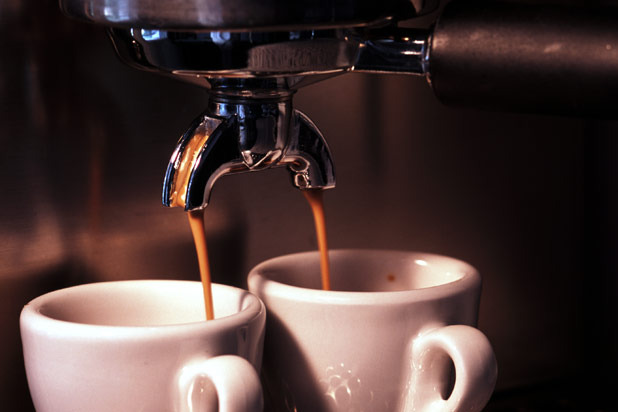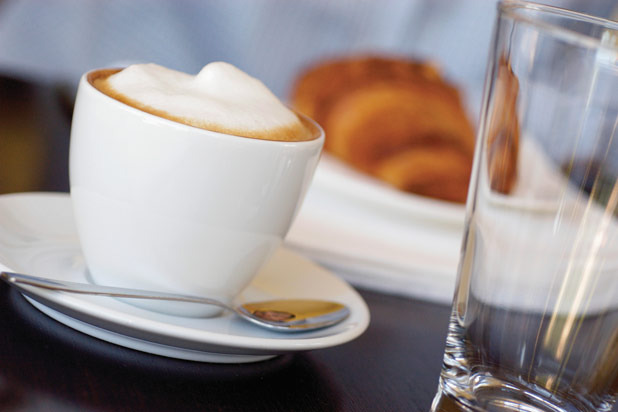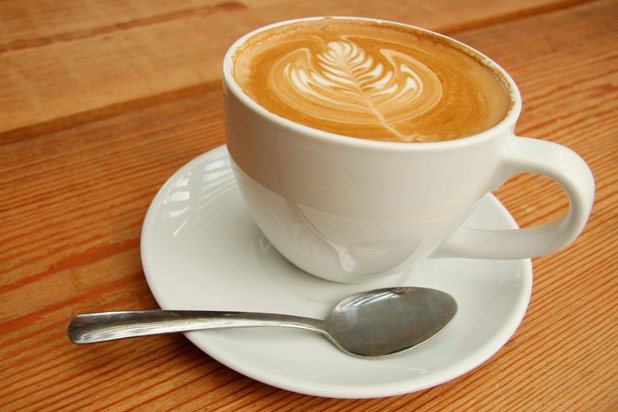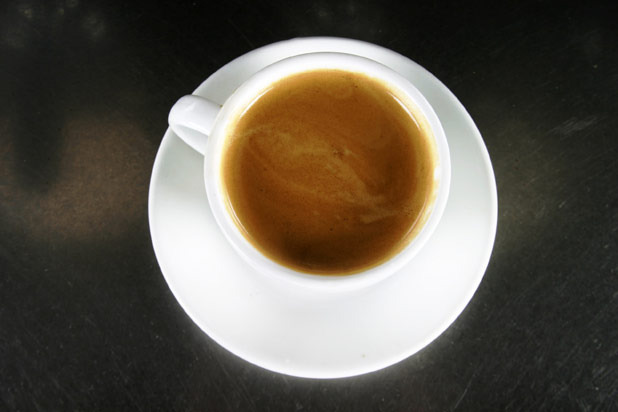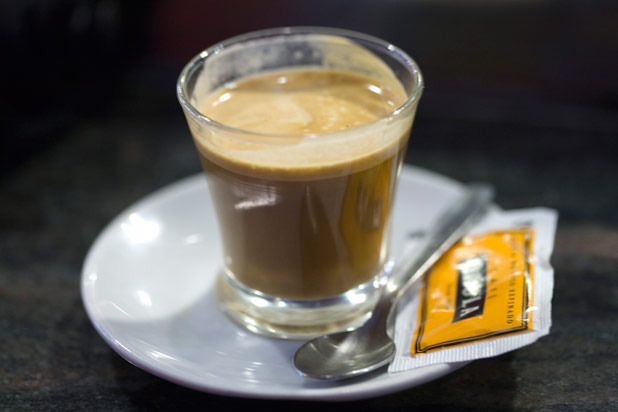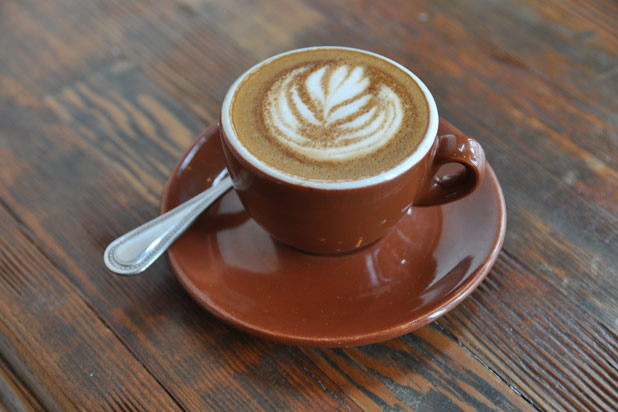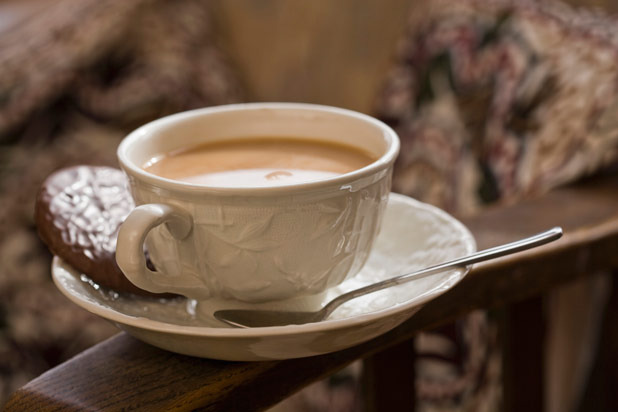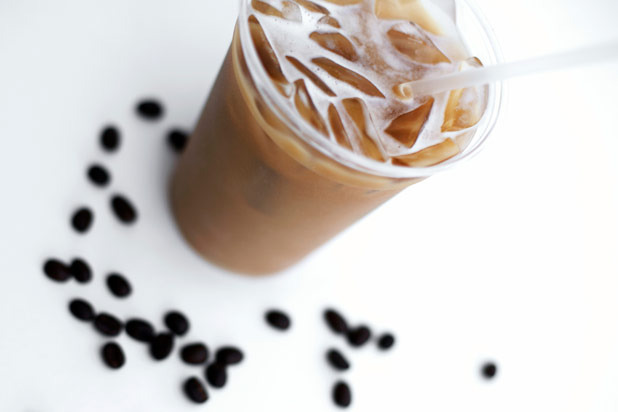Coffee 101: How To Order The Best Drink Slideshow
There is a common misconception that espresso is a bean or a roast. Actually, the word espresso refers to a brewing method. Espresso simply describes coffee that has been made in an espresso machine. Beans are finely ground before they receive quick dose of high pressure (about nine bars) and warm water. This pressure and water combination extracts a small quantity of dense, flavor-rich coffee. A shot of espresso refers to about 7 to 9 grams of ground coffee, which results in about 2 ounces of brewed coffee. A double shot is simply a double quantity of ground coffee brewed to produce twice as much. If the thought of getting just a straight shot of espresso sounds dull, remember that they act as a barometer for the barista's skill. As Gabrielle Rubinstein, co-founder of Joe the Art of Coffee in New York City says, "... The most challenging beverage to pull off is a straight shot of espresso. It's completely naked and any possible flaws that milk can hide are gapingly obvious."
Cappucino
This is a common espresso-based beverage from Italy that contains one part espresso, one part steamed milk, and one part frothed milk. If made properly, each sip should contain equal parts of coffee, milk, and foam. Though many American cafés choose to serve it in an 8-ounce cup, a proper cappuccino is actually served in a 5-ounce cup. The name means "little hood," referring to the small layer of foam on top. In Italy, its never drunk after a meal or after 11 a.m.
Latte
The popular latte is an Italian espresso drink with two parts steamed milk and one part coffee. It's generally larger than a cappuccino it has more milk and is served in a 7-ounce cup. Since the milk is only steamed and doesn't have extra texture from a large amount of foam, it's the perfect canvas for creating latte art. More milk means a more diluted flavor, making this drink a good jumping-off point for those new to coffee. Rubinstein describes the drink as, "gentler tasting, embraced by a cloud of creamy milk;" it's an ideal drink for those who want a comforting cup of coffee.
Americano
An Americano is a shot of espresso with water added to extend it. This creates a diluted taste that is closer to American filtered coffee than a shot of espresso. As much as 6 to 8 ounces of water can be added, though the amount is easily altered to suit personal preference. It's served black, without milk.
Cortado/Gibraltar
Despite the different names, the only thing that distinguishes the Cortado from the Gibraltar is which coffee shop you order it from. Cortado is a Spanish drink of espresso "cut" by steamed milk (cortado is Spanish for cut). It's a small drink, only slightly bigger than a macchiato, served in a 4-ounce glass. The name Gibraltar was coined by a Blue Bottle Barista (a San Francisco-based café) in 2005 and refers to the type of glass in which its served a Gibraltar glass. The drink might not always be on the menu, but any barista worth their salt will be able to prepare this little drink.
Macchiato
While Starbucks has made the macchiato famous, its version only bears a fleeting resemblance to the real thing. A traditional macchiato is a shot of espresso topped with a tiny portion of frothed milk. But this small drink is potent: it delivers the most concentrated espresso flavor, with a bit of milk added to cut the intensity. The name means "marked," which describes how the espresso is marked with a dash of frothed milk.
Café au Lait
This is a French drink made of strong, filtered coffee and scalded milk (milk that has been heated up but not steamed or frothed). It has a 1:1 ratio of coffee and milk. Looking for this drink at Starbucks? You'll want a misto, which is the Italian word for this brewed coffee beverage.
Flat White
A Flat White is an Australian espresso drink that's gaining popularity in England and America. It's the in-between of a cappuccino and a latte, served in a 6-ounce glass. It approximates the size of a cappuccino, but the milk is tightly steamed (meaning little to no foam) like a latte.
Cold Brew
Cold Brew refers to a method of brewing iced coffee that involves soaking the grounds in water for around eight hours in order to extract a full-bodied flavor. It produces a concentrate, which then can be watered down to the strength of your choosing. This hands-off method has become quite popular with cafés in recent years, but is equally easy to make at home as well. Many cafés will sell their concentrate bottled, so you can dilute it as you like at home.
Japanese Iced Coffee
This is a method for quickly making iced coffee in which you brew coffee over ice. The coffee is brewed in double strength over ice, so that the ice melts and dilutes the coffee as it's being prepared. Why choose Japanese iced coffee over cold brew? Some argue that this method highlights the nuances in coffee flavors better. That and it's much, much quicker.
Iced Coffee
Regular iced coffee can either be coffee left to cool, or strong hot coffee poured directly over ice. However, this often results in a diluted flavor, which is why new brewing methods for iced coffee have become popular recently.
Pour Over
This is a method of brewing coffee that involves pouring hot water over coarsely ground coffee and filtering it out to produce a large quantity. Though there are many methods, they all use the same process of steeping the ground beans in hot water. Some popular methods you may find at your local café are by using Chemex or Melitta, or an at-home favorite, the French press. While the method may seem traditional, it produces a well-rounded flavor that is anything but usual.
Mocha
A mocha is a popular, dessert-y coffee drink with chocolate. It's generally made by combining a shot of espresso with some cocoa powder mixed with milk. The milk is steamed, and the drink may come with latte art. A variation on this is bicerin; a drink from Turin, Italy, that is a combination of coffee, chocolate hazelnut cream (think of a less sweet version of Nutella), and heavy cream.
Frappucino
Ahh, the drink that took over America. Although many people believe that this frosty, milkshake-like coffee drink was first made at Starbucks, the drink actually has its roots elsewhere. The Frappuccino is the brainchild of George Howell of Coffee Connection, a Boston café that was purchased by Starbucks in the early '90s. Howell says of the Frappuccino, the drink he both loved and loathed, "It was a relief when Starbucks came to us with a really solid offer for the Coffee Connection. I was interested in single origin and estate coffee, but more and more of my time was spent with things like the Frappuccino." Though the current Frappuccino is an American drink, it was originally intended to be an homage to the Italian granita, an icy coffee drink with a smooth consistency that resembles something in between an Italian ice and a sorbet. The name, "Frappuccino," is a combination of the New England term for a milkshake, "frappe," and the word "cappuccino." What actually is in a Frappuccino? Starbucks keeps their recipe a heavily guarded secret, refusing to post the full ingredient list on its website. But one thing is for sure, this drink is responsible for Starbucks' explosive popularity. If you try to order this anywhere other than Starbucks, be warned as derisive glares will ensue. And FYI: if you thought a Frap would give you your caffeine fix, this drink contains barely any coffee.
